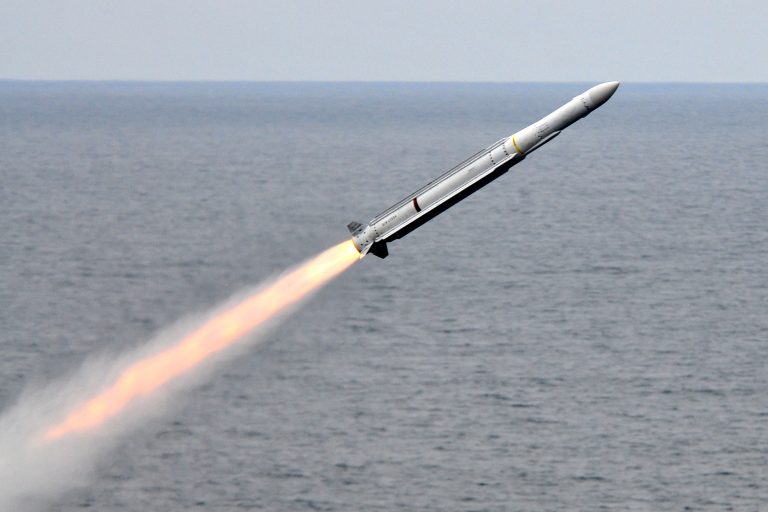Table Of Content

In the early 1960s, the Air Force began to question the usefulness of Quail in the face of improving Soviet defenses. In the Soviet Union, Sergei Korolev headed the GIRD-06 cruise missile project from 1932 to 1939, which used a rocket-powered boost-glide bomb design. The 06/III (RP-216) and 06/IV (RP-212) contained gyroscopic guidance systems.[5] The vehicle was designed to boost to 28 km altitude and glide a distance of 280 km, but test flights in 1934 and 1936 only reached an altitude of 500 meters.
Latest News
Air Force officials have argued that the legacy ALCM has become more difficult to maintain as its supply base becomes obsolete, and its effectiveness gets increasingly compromised as adversaries field more sophisticated air defense systems. The U.S. Navy has asked industry about the possibility of making a long-range air launched cruise missile up to 10 times cheaper than current missiles. The ALCM traces its history to the ADM-20 Quail missile, which began development in February 1956. The small jet-powered drone aircraft had a simple inertial navigation system (INS) that allowed it to fly a pre-programmed course that would make it visible to known Soviet defensive sites. A number of radar jammers and radar reflectors were intended to make it appear like a B-52 on a radar display.
Nuclear warhead versions
The Tomahawk sea-launched cruise missile (SLCM) and the Tomahawk ground-launched cruise missile (GLCM) had a length of 6.4 m (21 feet), a diameter of 53 cm (21 inches), and a range of 2,500 km (1,550 miles). The concept started as a long-range drone aircraft that would act as a decoy, distracting Soviet air defenses from the bombers. As new lightweight nuclear weapons emerged in the 1960s, the design was modified with the intent of attacking missile and radar sites at the end of its flight. The AGM-86B air-launched cruise missiles and AGM-86C/D conventional air-launched cruise missiles were developed to increase the effectiveness of U.S. The CALCM has been used since the 1990s for long-range precision strike on the opening hours of conflict.
Raytheon wins $2B contract for new nuclear cruise missile
Missile Threat brings together a wide range of information and analyses relating to the proliferation of cruise and ballistic missiles around the world and the air and missile defense systems designed to defeat them. Missile Threat is a product of the Missile Defense Project at the Center for Strategic and International Studies. LRSO is slated to replace the AGM-86B air-launched cruise missile, which was designed in the 1970s.
An enemy force would have to counterattack each of the missiles, making defense against them costly and complicated. The enemy's defenses are further hampered by the missiles' small size and low-altitude flight capability, which makes them difficult to detect on radar. CALCM's next employment occurred in September 1996 during Operation Desert Strike. In response to Iraq's continued hostilities against the Kurds in northern Iraq, the Air Force launched 13 CALCMs in a joint attack with the Navy.
The Navy Wants A Cheap Long Range Cruise Missile - And Soon
The United States, Russia, North Korea, India, Iran, South Korea, Israel, France, China and Pakistan have developed several long-range subsonic cruise missiles. These missiles have a range of over 1,000 kilometres (620 mi) and fly at about 800 kilometres per hour (500 mph).[37] They typically have a launch weight of about 1,500 kilograms (3,300 lb)[38] and can carry either a conventional or a nuclear warhead. Earlier versions of these missiles used inertial navigation; later versions use much more accurate TERCOM and DSMAC systems. The first firing test took place in July 2013 and was successful.[8] The MdCN has been operational on French FREMM frigates since 2017 and also equips France's Barracuda nuclear attack submarines, which entered operational service in 2022.
Media Services

Seven B-52Gs from Barksdale AFB launched 35 missiles at designated launch points in the U.S. Central Command's area of responsibility to attack high-priority targets in Iraq. These "round-robin" missions marked the beginning of the operation's Air Force component and were the longest known aircraft combat sorties in history at the time (more than 14,000 miles (23,000 km) and 35 hours of flight). Some missiles can be fitted with any of a variety of navigation systems (Inertial navigation, TERCOM, or satellite navigation). Larger cruise missiles can carry either a conventional or a nuclear warhead, while smaller ones carry only conventional warheads.
Improved JASSM versions
Iran's assault was designed to saturate Israeli and U.S. air defenses with drones and cruise missiles and clear the way for Iran's ballistic missiles, two U.S. officials told CBS News national security correspondent David Martin. It took several hours for the drones and missiles to travel toward Israel, and alerts began to sound across the country at about 2 a.m. The CALCM became operational in January 1991 at the onset of Operation Desert Storm. Seven B-52s, from Barksdale AFB, La., launched 35 missiles at designated launch points in the U.
Deployment overseas began in 1954, first to West Germany and later to the Republic of China and South Korea. Air Force deployed Matador units in West Germany, whose missiles were capable of striking targets in the Warsaw Pact, from their fixed day-to-day sites to unannounced dispersed launch locations. This alert was in response to the crisis posed by the Soviet attack on Hungary which suppressed the Hungarian Revolution of 1956. The existence of this model became known only after its use in the 1991 Gulf War.
The upgraded avionics package was retrofitted into all existing CALCM (Block 0) so all AGM-86C missiles are electronically identical. CALCM is a long-range standoff weapon that has been employed effectively in combat in Operation Desert Storm, Desert Strike, Desert Fox, Operation Allied Force, Operation Enduring Freedom and Operation Iraqi Freedom. The CALCM was also used in Operation Desert Fox in 1998, Operation Allied Force in 1999, and Operation Iraqi Freedom in 2003. Operation Iraqi Freedom was also the combat debut of the AGM-86D, a further development of the missile which replaced the blast/fragmentation warhead of the AGM-86C with a penetrating warhead. The USAF adopted the AGM-86 for its bomber fleet while AGM-109 was adapted to launch from trucks and ships and adopted by the USAF and Navy.
LRSO Nuclear Missile's Development Extended, Funding Deferred - Air & Space Forces Magazine
LRSO Nuclear Missile's Development Extended, Funding Deferred.
Posted: Sat, 23 Mar 2024 07:00:00 GMT [source]
The United States Air Force (USAF) deploys an air-launched cruise missile, the AGM-86 ALCM. The Boeing B-52 Stratofortress is the exclusive delivery vehicle for the AGM-86 and AGM-129 ACM. Both missile types are configurable for either conventional or nuclear warheads. The German V-1 missile used in World War II was a precursor of the cruise missile, which was developed by the United States and the Soviet Union in the 1960s and ’70s. Capable of carrying either a nuclear or a conventional warhead, the cruise missile was designed to have a very low radar cross section and to hug the ground while traveling at a relatively slow speed to its target. The AGM-86 Air-Launched Cruise Missile (ALCM) is a long-range, air-launched standoff missile designed to give U.S. bombers the ability to launch their payload from outside the range of anti-aircraft weapons.
For this role, the accuracy of the original INS guidance hardware was not enough. To provide the accuracy needed to attack the SAM sites with a small warhead, some system was needed to zero out the drift in-flight, and for this need, a radar-based TERCOM system was added. Quail was designed in the mid-1950s when the normal attack profile for a strategic bomber was to fly as high and fast as possible to reduce the time the defenders had to respond to the aircraft before it flew out of range. This was effective against interceptor aircraft but of little use against surface-to-air missiles (SAMs), whose attack times were measured in seconds. During the Cold War, both the United States and the Soviet Union experimented further with the concept, of deploying early cruise missiles from land, submarines, and aircraft. The main outcome of the United States Navy submarine missile project was the SSM-N-8 Regulus missile, based upon the V-1.
During a July 2 briefing, Pentagon spokesman John Kirby said the Defense Department aims to keep LRSO development on track, even as it executes a Nuclear Posture Review that could eventually call for the weapon’s cancellation. Back in March, over White Sands Missile Range in New Mexico, an MC-130J transport belonging to the Air Force Special Operations Command dropped an instrumented “deployment box” attached to a G-11 high-altitude parachute. Whoever that might include will have to assure enough capacity and do so quickly if MACE is to be fielded by Fiscal 2027 in both high numbers and at low cost per missile.
B-52H bombers carry six AGM-86B/C/D missiles on each of two externally mounted pylons and eight internally on a rotary launcher, giving the B-52H a maximum capacity of 20 missiles per aircraft. The small, winged AGM-86B/C/D missile is powered by a turbofan jet engine that propels it at sustained subsonic speeds. After launch, the missile's folded wings, tail surfaces and engine inlet deploy. The AGM-86B is then able to fly complicated routes to a target through use of a terrain contour-matching guidance system.
For midcourse guidance, the missile uses both an inertial navigation system and GPS to track its location and trajectory. As SCAD moved from the pure-decoy role to decoy-and-attack, this meant it would be able to carry out the same mission as SRAM, but from much longer range. Accordingly, in June 1973, SCAD was canceled in favor of a system dedicated purely to the long-range attack mission. The original designation number remained, but the name changed to reflect the new mission, becoming the Air Launched Cruise Missile, or ALCM. Development was approved in July 1970, and it was given the designation ZAGM-86A, the Z indicating its initial development status. India is currently developing hypersonic BRAHMOS-II which is going to be the fastest cruise missile.
